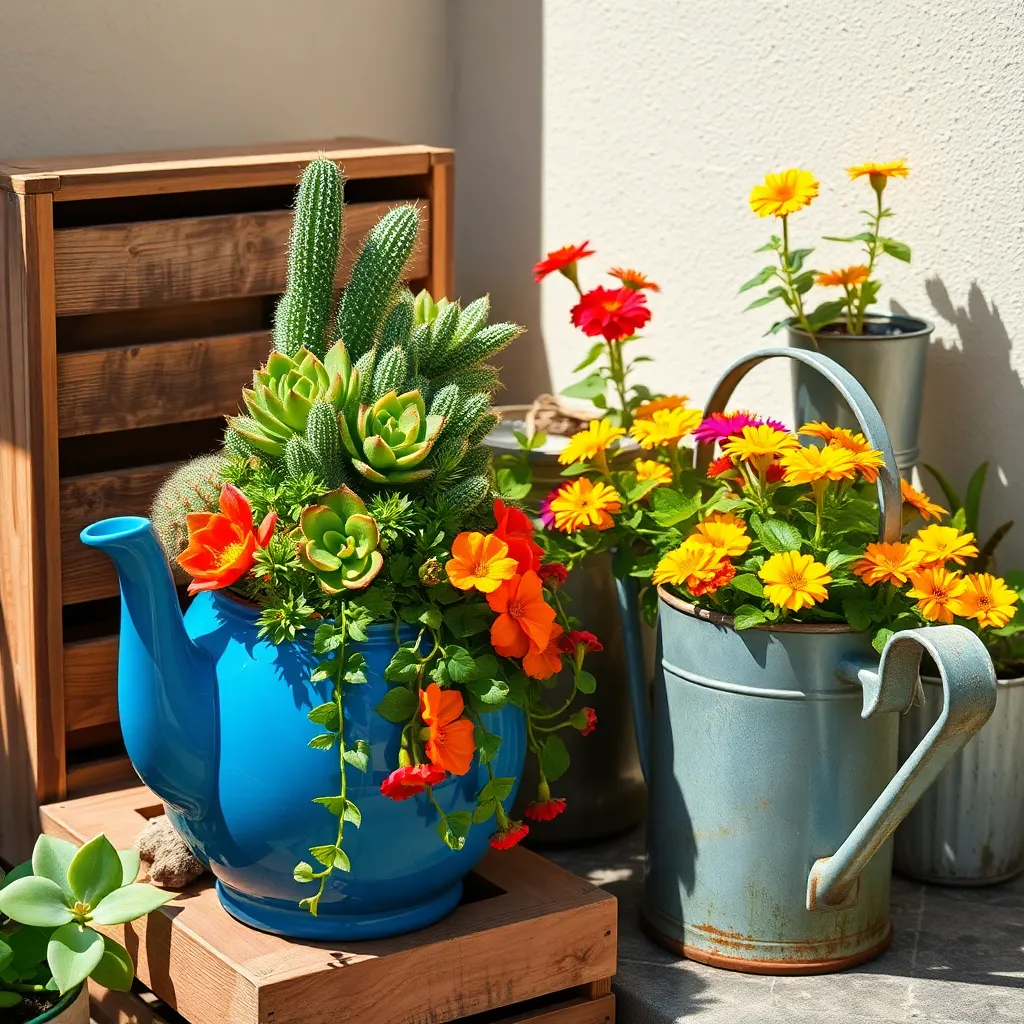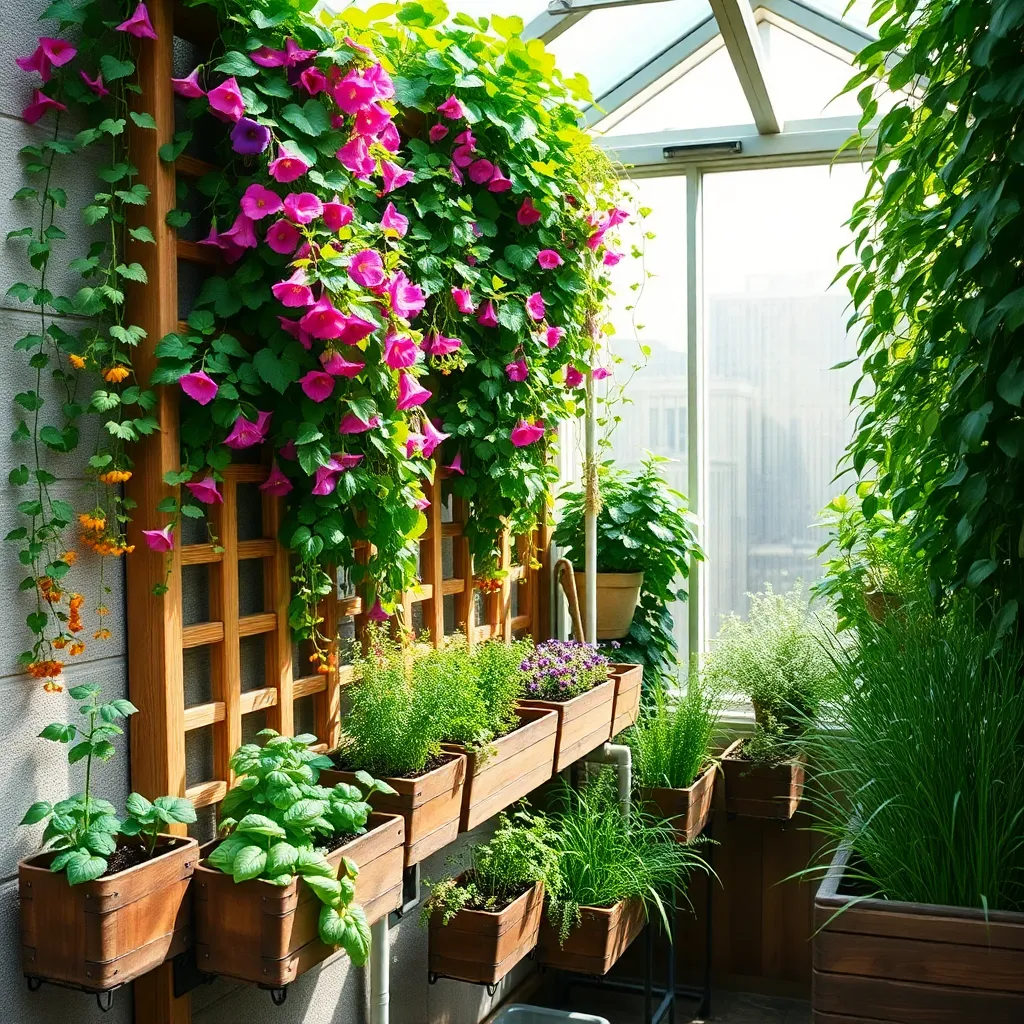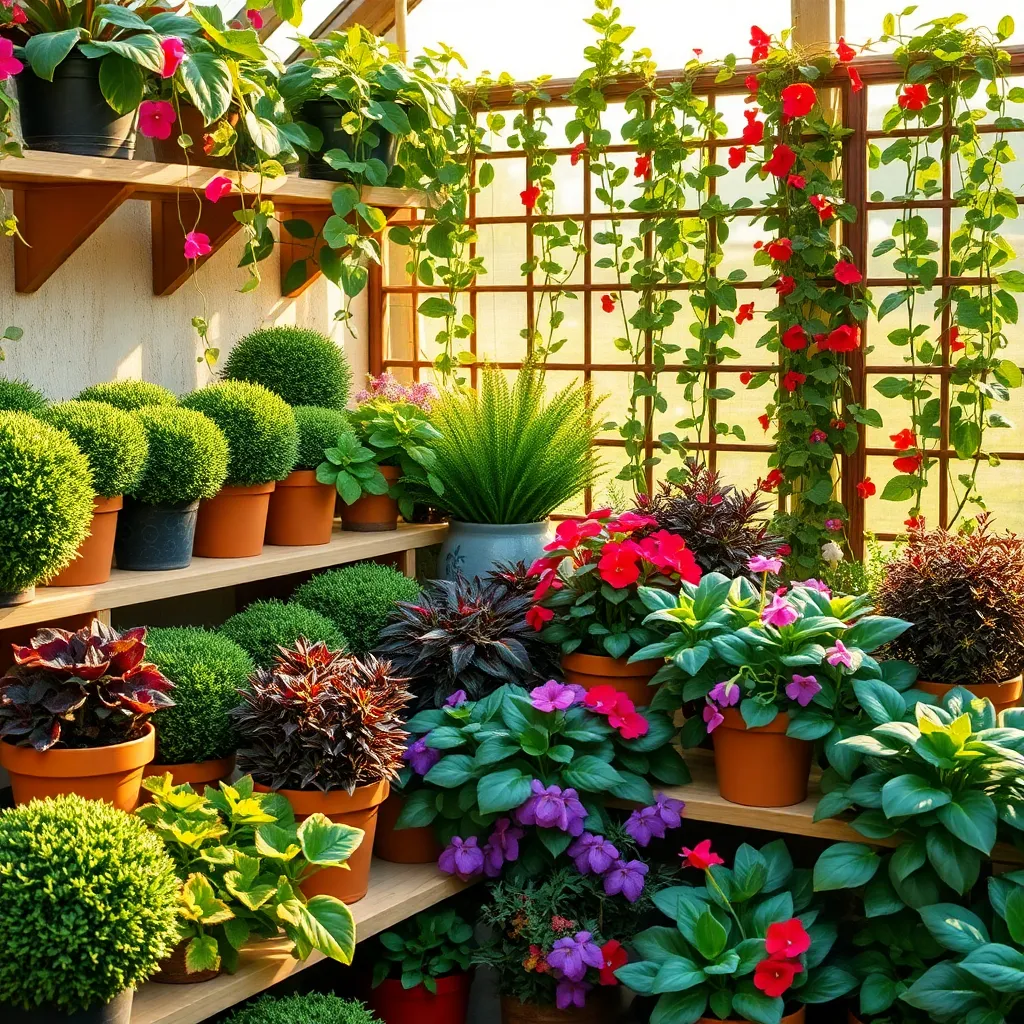Gardening is a boundless adventure, a delightful journey of creativity and growth, whether you’re just starting with your first potted plant or you’ve already turned your small space into a lush oasis. “Creative Planter Ideas For Small Gardens” is here to inspire and guide you, transforming limited spaces into thriving green havens that bring joy and beauty into your life.
In this guide, you’ll discover innovative planter concepts that maximize every inch of your garden, unlocking the hidden potential of your space. With these ideas, you’ll not only add personality to your garden but also reap the rewards of healthier and more vibrant plants, making your gardening journey both enjoyable and fruitful.
Packed with practical advice and creative flair, this guide will equip you with the confidence to experiment and succeed, regardless of your gardening experience. Embrace the joy of nurturing life in your own home and watch as your garden flourishes, a testament to your newfound skills and the endless possibilities of small-space gardening.
Repurpose Household Items Creatively

Incorporating household items as planters is not only a sustainable choice but also adds a unique charm to your garden. Old teapots, for example, can be transformed into delightful planters for small herbs like thyme or mint; simply ensure they have adequate drainage by drilling a few small holes in the bottom.
Consider using shoe organizers as vertical gardens, which are perfect for small spaces. Fill each pocket with a mixture of potting soil and compost, and plant shallow-rooted plants such as strawberries or lettuce, ensuring they receive at least six hours of sunlight daily.
Wine crates can be repurposed into rustic planters suitable for a variety of plants. Line the crates with landscape fabric to prevent soil loss, and fill them with a well-draining potting mix ideal for growing root vegetables like radishes or carrots.
Advanced gardeners might experiment with using old metal colanders as hanging planters for trailing plants. Securely attach the colander with sturdy chains, fill it with a mix of peat moss and perlite, and plant cascading flowers like petunias or verbena that thrive in well-aerated environments.
Utilize Vertical Space Efficiently

When space is limited, utilizing vertical space can transform your garden into a lush oasis. Consider installing a simple trellis or a vertical planter to make the most of your available area and add visual interest.
Begin by selecting plants that naturally grow upwards, such as peas, beans, or even climbing roses. These plants will thrive on trellises, creating a living wall that maximizes space and enhances the garden’s aesthetic appeal.
For a more advanced approach, you can create a tiered planting system using shelves or stacked pots. This method not only saves space but also allows for diverse plant groupings, such as combining herbs, flowers, and small vegetables, each requiring different light and water conditions.
Ensure you choose the right soil and container size for your vertical planters. A lightweight potting mix is ideal for vertical gardens, as it drains well and reduces the weight on the structure, preventing potential damage.
Watering can be a challenge in vertical gardens due to gravity, but installing a drip irrigation system can efficiently deliver water to each plant. This system ensures consistent moisture levels, crucial for the health of your vertical garden, and can be particularly beneficial in reducing water waste.
Incorporate Hanging Planters Indoors

Hanging planters are a fantastic way to maximize small indoor spaces by using the vertical area effectively. To get started, select lightweight planters with sturdy hooks or macramé hangers that can securely hold your plants.
Consider the lighting needs of your plants when choosing their location. For instance, place sun-loving varieties like pothos or spider plants near south-facing windows, where they can soak up plenty of natural light.
It’s important to choose the right soil mix for your hanging planters. Use a well-draining potting mix to prevent waterlogged roots, which can lead to rot and other plant health issues.
Watering frequency is crucial for the success of indoor hanging plants. Generally, you should water when the top inch of soil feels dry, but be mindful of each plant’s specific needs and adjust accordingly.
For those looking to add a touch of creativity, consider mixing different plant varieties in one planter to create a lush, cascading effect. Choose plants with similar light and water requirements to ensure they thrive together.
Choose Compact Plant Varieties

Compact plant varieties are a fantastic solution for small gardens, as they offer abundant growth without taking up too much space. These plants are specially bred to stay smaller, making them ideal for tight quarters like balconies or small patios.
Start by choosing compact varieties of your favorite plants, such as dwarf tomatoes, basil, or even miniature roses. Dwarf plants typically require the same care as their full-sized counterparts, but you’ll benefit from their smaller, more manageable size.
When planting compact varieties, ensure they receive enough light to thrive. Most compact plants still need at least six hours of sunlight daily, so placing them in a sunny spot is crucial.
Soil quality is another important factor, as compact varieties often have shallower root systems. Use a high-quality potting mix with good drainage to prevent waterlogging, which can be detrimental to these plants.
For those with a bit more experience, consider experimenting with companion planting to maximize your small space. Pairing compact plants with herbs or flowers can enhance growth and deter pests, making your tiny garden both productive and beautiful.
Mix and Match Planter Materials

Mixing and matching different planter materials can create a visually appealing and functional small garden space. Consider using materials like terracotta, metal, and wood to add texture and interest to your garden area.
Terracotta planters are a classic choice, providing excellent breathability for plant roots. Ensure you water plants in terracotta pots more frequently, as they tend to dry out faster than other materials.
Metal planters offer a modern look and are incredibly durable. However, they can heat up quickly, so it’s beneficial to place them in partial shade to prevent overheating delicate plant roots.
Wooden planters add a rustic charm and are great for retaining moisture. To prolong their life, line the inside of wooden planters with a plastic liner and apply a sealant to protect against rot.
Conclusion: Growing Success with These Plants
In exploring ‘Creative Planter Ideas For Small Gardens,’ we’ve uncovered five key relationship concepts that can transform your living space and strengthen your bonds. First, the art of collaboration teaches us to work together, mirroring how shared gardening projects can enhance communication. Second, nurturing growth parallels the care required in relationships, reminding us to invest time and attention. Third, the importance of creativity reflects how innovation can breathe new life into both gardens and connections. Fourth, adaptability shows us that being flexible and open to change is crucial for thriving relationships. Finally, patience underscores the value of allowing time for growth, whether in plants or partnerships.
To put these insights into action, why not start a small gardening project with your loved one this weekend? This hands-on experience can deepen your connection while beautifying your space. Don’t forget to bookmark this article as your go-to guide for relationship enrichment through gardening.
Remember, the seeds of a successful relationship are planted today. By nurturing these concepts, you’re paving the way for a flourishing future together. Save this article as a resource, and let it inspire ongoing growth in both your garden and your relationships.

